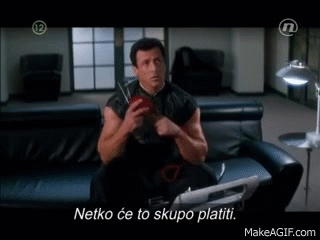I’m an Adjunct Professor this year at UC Berkeley’s Graduate School of Journalism (Go Bears).
In a recent class we had an awesome VR company come and give us the low-down. Thanks Emergent!
Many students told me they came in skeptics and walked away “believers.” I think this means the class is going well, since my main goal is make sure they don’t turn into Beliebers.
Testing out this #VR thing with @EmergentVR @ucbsoj #immersivejournalism pic.twitter.com/yJuBPFxLI3
— Lakshmi Sarah (@lakitalki) November 13, 2015
I’m willing to bet every serious journalist understands the potential storytelling power of virtual reality. Let’s take that as a given. It’s not up for debate. That’s not what this post is about. This is about how our ethics stay the same, but have to be applied with a different lens.
Ethics by way of analogy
Matt Waite is talking about a new lens for our ethics in regards to drones.
How close should a drone get to a disaster scene with people actively mourning? How close should a drone get flying over Syrian refugees, people who may be fleeing other kinds of drones and could stampede away at the sight of one?
These are important questions.
It doesn’t change our ethics. The standard remains: Treat people with dignity, respect and minimize harm. We just have to apply those ethics through a filter we aren’t familiar with (flying objects as our acting agent).
https://ijnet.org/en/blog/matt-waite-suggests-guidelines-drone-journalism
Virtual Reality Flips the “Willing Suspension of Disbelief”
At the beginning of the Virtual Reality class our guest speaker, Peter Wilkins, said something along the lines of:
The goal of Virtual Reality is to create a sense of “presence,” whereby even if your higher level brain knows what you are observing is virtual, your low-level brain absorbs the experience as a kind of real memory.
The way Peter worded it felt like the line at the beginning of a Sci-Fi movie, where the resident scientist explains a concept that will become important later on in the film. You know that moment. It’s always a telegraphed concept. Implanting false memories is hardly a new Sci-Fi trope. But here’s a technology that can really do it.
“We use the phrase “suspension of disbelief” about the experience of watching TV or movies. This implies that our default state watching TV and movies is disbelief. We start to believe only when we become sufficiently immersed.
With VR, the situation is reversed: we believe, by default, that what we see is real.”
Peter showed an example of a person in Virtual Reality holding a virtual chainsaw and cutting down a virtual tree. The tree falls and the person observers the tree falling, sees the branches break, hears the tree hit the ground and more.
The purpose of the experiment was to see if people would cut back on paper and recycle more in the real world after their virtual experience of destroying a tree.
We all intuitively know that Virtual Reality can have an effect on our psyche. This can be a huge positive. It can be used to treat phobias or PTSD.
After Peter showed this example my mind immediately went to two places.
- Lots of people say after slaughtering an animal they eat less meat. Could the same be true of a virtual slaughtering experience?
2. It reminded me of the 1993 (cult classic?) movie Demolition Man where characters played by Sylvester Stallone and Wesley Snipes have “behavior modification” done to them while they are in a cryogenic state. Stallone KNOWS that the behavior isn’t natural to him, but he just wants to knit and he is really good at it too!

It’s easy to imagine how advocacy organizations could use Virtual Reality to increase empathy around a cause. And let’s be honest: Every journalist wants to create empathy as well. Doesn’t every journalist want to tell a story that would make somebody cry or change somebody’s mind?
At the same time, I would posit journalists don’t want to implant false memories. Journalists don’t want to give their readers PTSD. Journalistsdon’t want to unfairly manipulate somebody’s low-level brain functions.
If journalists do want to change real-world behavior, we have to think carefully about why and how.
Journalist in Conversation with Plato
Plato: Do you want to get people to vote.
Journalist: Yes!
Plato: Do you want to influence who they vote for?
Journalist: Well, kinda, yea.
Plato: Do you want to influence how they vote without them knowing how they came to that decision?! Do you want to violate their sense of being an independent actor?
With VR, that slope can get slippery real quick.
Ethics don’t REALLY change
None of these questions are new. They map to existing ethical standards. The SPJ Code of Ethics (disclaimer — I’m on the advisory board) remains an amazing resource. A kind of torch light to take with you while navigating uncharted territory.
“Take responsibility for the accuracy of their work. Verify information before releasing it. Use original sources whenever possible.”
In a VR environment where memories can be created, we must take care that the “memories,” even if not originally lived by the consumer, are as close to accurate as possible. And this requires thinking about accuracy in three-dimensions. How close to that building did this occur? Is that really what the chandelier looked like? Was this emotional music really playing in the background, or are we over-emoting?
For some of these questions we might not know the answers. How do we square that circle?
“Ethical journalism treats sources, subjects, colleagues and members of the public as human beings deserving of respect.”
This comes from the “minimize harm” section of the code. And that phrase does all the lifting we need: “minimize harm.”
Now, we don’t want to shelter people from the world or ideas. It sucks to know the crappy things happening in the world or confront ideas we disagree with. I don’t think journalists should be expected to withhold these for the sake of minimizing harm.
But as I mention above: I can imagine scenarios where a VR experience gives a user nightmares. Makes them scared of real life situations or gives them a kind of PTSD. Certainly there is some line where a journalist should admit we can do real harm to a reader that isn’t justified by the information/story we are trying to convey.
The next section of the code of ethics is titled “Act Independent” with the line:
“The highest and primary obligation of ethical journalism is to serve the public.”
If we really take to heart this notion that VR can do more than “inform” people, but can alter real world behaviors, we are swimming in really interesting waters. I expect commercial companies to fully take advantage of this. But should non-fiction truth tellers? Presumably we tell stories to make change. We want people to re-think their place in the world and how they act. We want to hold powerful people accountable and empower less powerful people to act.
But should we create a story that will increase the likelihood of somebody to protest (as a kind of example)?
That doesn’t mean “share the information” and hope somebody will protest in response. I mean: Should we craft a storytelling experience that we know with statistical significance will increase the likelihood of somebody showing up to protest. Should we treat people as objects to be influenced? Should we manipulate? Can we do that and claim it’s in the public interest? And if the answer is “no,” to what degree should we avoid having that kind of influence?
I don’t claim to know definitive answers to these things. But I do have plenty of questions (how’s that for an unsatisfying end!)


